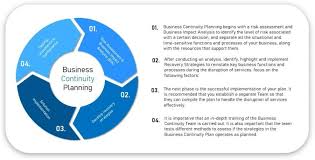Optimizing Construction Equipment Maintenance: The Power of Customizing Inspection Templates

Construction sites are dynamic environments with a wide range of equipment, from cranes and excavators to loaders and bulldozers. Keeping this equipment in optimal condition is critical not only to ensure smooth operations but also to guarantee worker safety. Regular inspections are essential for identifying potential issues before they escalate into costly repairs or accidents. However, managing inspections can be challenging, especially when using generic or one-size-fits-all inspection templates that may not account for the specific needs of different equipment.
Customizing construction inspection software for construction equipment can revolutionize the inspection process, making it more efficient, comprehensive, and tailored to the unique requirements of each piece of machinery. In this blog, we will explore the benefits of customizing inspection templates, discuss the key features to include, and highlight how adopting this approach can enhance equipment longevity and site safety.
Why Customizing Inspection Templates Matters
Construction equipment is subject to varying conditions depending on the environment, usage intensity, and the type of project. Standard inspection templates, while helpful as a baseline, may not fully capture the unique nuances of each machine. Customizing templates ensures that the inspection process is detailed and relevant to the specific equipment, leading to more accurate assessments and better maintenance outcomes.
Here’s why customization is crucial for construction equipment inspections:
1. Equipment-Specific Needs: Different types of construction equipment have distinct components, operating mechanisms, and maintenance requirements. A customized template ensures that each machine is inspected thoroughly based on its unique configuration.
2. Compliance with Safety Standards: Construction sites must adhere to strict safety regulations. Customized templates can be designed to include all relevant compliance checks, ensuring that every inspection meets regulatory standards and reduces the risk of violations.
3. Enhanced Efficiency: Using a template specifically tailored to the equipment being inspected reduces the chances of oversight. Inspectors can focus on critical areas without wasting time on irrelevant checks, leading to quicker yet more effective inspections.
4. Better Record Keeping: Customized templates allow for detailed documentation of equipment conditions, making it easier to track maintenance histories, identify recurring issues, and schedule necessary repairs or replacements.
Key Components of Customized Inspection Templates
A customized inspection template should address the unique requirements of each piece of construction equipment, from the basic operational checks to specific component inspections. Below are the key components that should be considered when designing these templates:
1. General Information and Equipment Identification
– Start by including essential details such as the equipment type, model, serial number, location, and operator information. This helps ensure that the correct piece of equipment is being inspected and allows for better tracking of inspection histories across multiple assets.
2. Visual Inspection
– Visual inspections are the first step in identifying obvious signs of wear and tear. Customized templates should include checks for:
– Exterior damage (dents, scratches, or cracks)
– Tire or track condition
– Fluid leaks (oil, hydraulic fluid, coolant)
– Proper attachment of accessories and safety equipment
– Cleanliness (debris or mud accumulation that could affect performance)
3. Safety Features Inspection
– Construction equipment is often subject to harsh conditions, which can compromise the effectiveness of safety features. Inspecting and testing safety mechanisms is essential to ensure that both operators and nearby workers are protected. This section of the template should include:
– Operational safety lights and alarms
– Roll-over protective structures (ROPS)
– Seat belts and safety harnesses
– Fire extinguishers and emergency shut-off systems
– Functionality of backup alarms and cameras
4. Operational Checks
– After visual inspections, operational checks are critical to ensure that the equipment is functioning as expected under load. Customize this section based on the equipment’s primary functions. For example:
– For cranes, inspect the boom, hooks, and hoists.
– For excavators, check the bucket, swing motor, and hydraulic controls.
– For loaders, inspect the lift arms and attachment mechanisms.
Some common operational checks to include across various equipment types are:
– Engine start-up and shutdown
– Steering responsiveness
– Brake performance
– Hydraulic system operation
– Transmission functionality
5. Fluid Levels and Maintenance
– Ensuring that fluid levels are within acceptable ranges is essential for preventing breakdowns. Custom templates should include sections to check:
– Engine oil levels and quality
– Hydraulic fluid levels
– Coolant levels
– Fuel system
– Transmission fluid
Additionally, note when the equipment is due for routine maintenance tasks such as oil changes, filter replacements, or system flushes.
6. Wear and Tear Assessment
– Construction equipment is exposed to intense operational conditions, leading to wear and tear over time. Customizing inspection templates to address the specific parts that are prone to wear (based on the equipment type) is crucial for preventing equipment failure. Some areas to inspect include:
– Tracks or tires for wear patterns or damage
– Hydraulic hoses for leaks or cracks
– Belts and chains for wear
– Gears and bearings for smooth operation
7. Electronics and Controls
– Modern construction equipment often features sophisticated electronics, GPS systems, and automated controls. Customized templates should include checks for:
– Operational control panel functionality
– GPS system calibration
– Monitoring and diagnostic system status
– Communication systems (if applicable)
– Battery and wiring conditions
8. Attachments and Accessories
– Construction equipment often uses various attachments, such as buckets, augers, or hammers. Customized inspection templates should account for these, ensuring that they are properly attached, operational, and in good condition. Consider including checks for:
– Attachment wear and integrity
– Secure attachment to the main equipment
– Hydraulic connections and functionality of powered attachments
Benefits of Customizing Inspection Templates for Construction Equipment
Customizing inspection templates to suit specific equipment provides a range of benefits that go beyond ensuring compliance and meeting safety standards. These advantages include:
1. Increased Equipment Lifespan: By performing thorough and specific inspections, potential issues can be identified early, leading to timely repairs and maintenance. This helps extend the lifespan of construction equipment, reducing the need for costly replacements.
2. Improved Safety on Construction Sites: Customized templates ensure that safety checks are tailored to the specific equipment being used, reducing the likelihood of accidents caused by equipment malfunctions or overlooked safety features.
3. Better Efficiency in Maintenance Operations: Tailoring templates to each piece of equipment reduces the chances of missing important inspection points while avoiding redundant checks. This improves overall efficiency in conducting inspections and maintaining equipment.
4. Cost Savings: Early detection of issues through customized inspections can prevent minor problems from escalating into major, expensive repairs. Additionally, well-maintained equipment operates more efficiently, reducing fuel consumption and operating costs.
5. Enhanced Accountability and Documentation: Customized inspection templates help keep detailed records of each piece of equipment’s condition. This documentation can be invaluable for audits, regulatory compliance, and insurance claims.
6. Reduced Downtime: Thorough inspections reduce the likelihood of unexpected breakdowns, which can cause significant delays in construction projects. By ensuring equipment is in optimal working condition, companies can minimize downtime and keep projects on schedule.
7. Scalability Across Different Projects: Construction projects vary in size and scope, and the equipment required for each project may differ. Custom inspection templates can be adapted based on the specific equipment needs of each project, making it easier to manage inspections across multiple sites.
How to Implement Custom Inspection Templates
Implementing customized inspection templates is straightforward, especially when using modern inspection software solutions. Here’s how construction companies can get started:
1. Assess Equipment Requirements: Begin by evaluating the specific inspection needs of each type of equipment used on-site. Consider the manufacturer’s recommendations, operational conditions, and any industry-specific compliance requirements.
2. Use Inspection Software: Modern inspection software platforms offer customizable template-building tools that allow companies to create and adapt templates based on their equipment. These platforms often feature pre-built templates that can be modified to suit individual needs.
3. Train Inspectors: Ensure that inspectors are trained on using the customized templates and understand the importance of conducting thorough inspections. Training should include recognizing common equipment issues and understanding the template’s relevance to each piece of machinery.
4. Regularly Update Templates: As equipment ages or as new regulations are introduced, templates should be reviewed and updated to reflect current requirements. Regular updates ensure that inspections remain relevant and comprehensive.
Conclusion: Streamlining Construction Equipment Maintenance with Custom Templates
Customizing inspection templates for construction equipment is a powerful way to enhance maintenance efficiency, improve safety, and reduce operational costs. By tailoring inspections to the unique needs of each piece of machinery, construction companies can ensure that equipment remains in optimal condition, reducing the likelihood of costly repairs and downtime. With modern inspection software making customization easier than ever, adopting this approach is a practical step toward more effective equipment management.
The benefits of customizing inspection templates extend beyond the immediate advantages of improved equipment performance. They also foster a culture of safety, compliance, and proactive maintenance that ultimately enhances project success and profitability.





